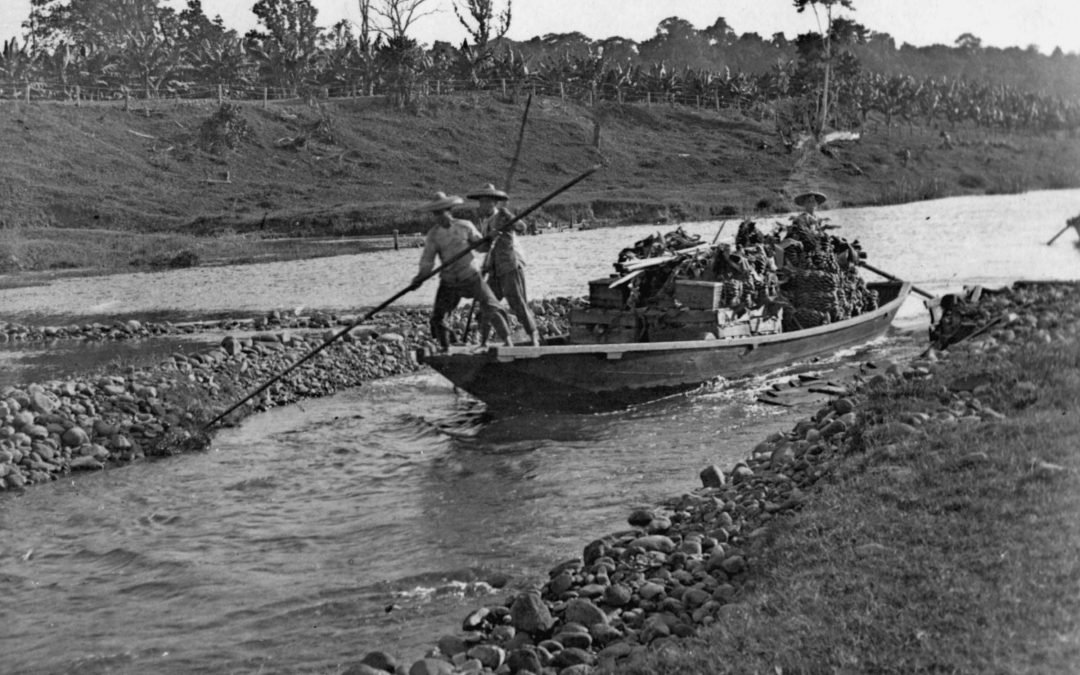Early Banana Growing in North Queensland
Bananas are Australia’s largest horticultural industry and its bestselling supermarket item. Over ninety percent of Australia’s banana crop is produced in North Queensland. Banana plants were introduced to Australia in the early to mid-nineteenth century, with the first recorded cultivation taking place in Western Australia. At this point, Australia did not produce a commercial crop, with bananas intended for sale being imported from Fiji.
Banana plants were probably first introduced to North Queensland in the 1870s by Chinese immigrants and Polynesians employed in the sugar industry. During the 1880s, Chinese immigrants began to cultivate fruit crops (including bananas) in the areas around Port Douglas, Cooktown, Cairns, and Innisfail. They became not only a regional success but a national one, with the Chinese community remaining the dominant force in Australia’s banana trade (both cultivation and importation) until the 1930s.
The reasons for the Chinese community’s decline in influence after this point were multi-faceted, although discriminatory policies played a significant role. Shortly after federation, the Commonwealth Government passed the Immigration Restriction Act (1901), limiting ‘non-white’ immigration. Serving as the basis for the White Australia Policy, it particularly targeted Asian (especially Chinese) immigrants. Allowing immigration officers to administer a dictation test to prospective migrants in any European language (or, after 1905, any prescribed language), it facilitated indirect exclusion on racial grounds. The Queensland government also introduced legislation restricting the participation of non-European individuals in banana and sugarcane cultivation. In the tradition of the Immigration Restriction Act (1901), Queensland’s Banana Industry Preservation Act (1921) required ‘coloured’ labourers to pass a dictation test.
North Queensland’s banana industry was also impacted by the return of older banana growers to China, a shift towards sugarcane cultivation among younger growers, and the difficulties posed by a combination of fruit fly contamination, cyclones, competition from Fijian imports, and transportation difficulties. The First World War had an especially devastating impact, with wartime shipping restrictions coinciding with disease outbreaks. The twentieth century was also defined by constant efforts to control the spread of bunchy top disease, an incurable viral infection, which prevents banana plants from producing fruit. (Thankfully, bunchy top has been prevented from gaining a foothold in North Queensland.) Nevertheless, banana growing only came back into its own in North Queensland following the Second World War.
See:
Andrea Crothers. “We’re Facing a Future Without Our Favourite Banana.” SBS, 7th April 2016. https://www.sbs.com.au/food/article/2016/04/07/were-facing-future-without-our-favourite-banana.
Australian Banana Grower’s Council. “History of Bananas.” 2019. https://abgc.org.au/our-industry/history-of-bananas/.
Department of Health and Aging. “The Biology of Musa (banana): Version 1: January 2008.” 2008. https://www1.health.gov.au/internet/ogtr/publishing.nsf/Content/banana-3/$FILE/biologybanana.pdf.
National Archives of Australia. “Immigration Restriction Act 1901 (Commonly Known as the White Australia Policy).” 2019. http://www.naa.gov.au/collection/a-z/immigration-restriction-act.aspx.
Kevin Rains. “The Chinese Question.” Queensland Historical Atlas: Histories, Cultures, Landscapes, 29th September 2010. https://www.qhatlas.com.au/content/chinese-question.
La Trobe University, “Asian Studies Program: Chinese Australia: Chinese and the Banana Industry.” 2004. https://arrow.latrobe.edu.au/store/3/4/5/5/1/public/FMPro8616.html?-db=background.fp5&-format=format/background_record.htm&-lay=web&id=8&-max=1&-find=.
Anne Vézina. “Australia’s Hundred Years War on Bunchy Top.” ProMusa, 9th April 2013. http://www.promusa.org/blogpost263-Australia-s-Hundred-Years-War-on-bunchy-top.

